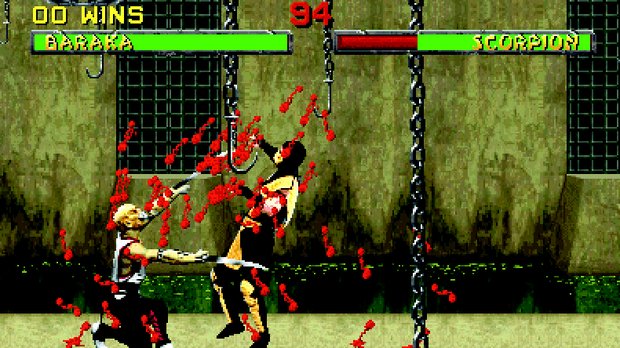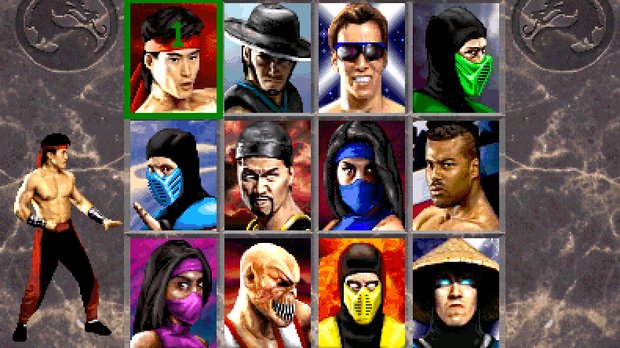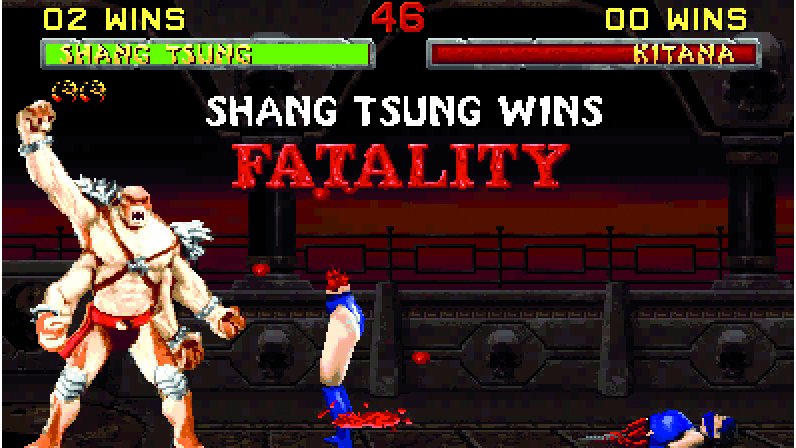What made Mortal Kombat 2 fatally attractive
Second time seems to be the charm in the jam-splattered arena of 2D fighting games. Street Fighter 2. Samurai Showdown 2. Marvel Vs Capcom 2. This first sequel is when the keen but green rookie, having taken some beatings and a few notes, matures into a tough and wily warrior. Fortunately for the sake of this intro, Mortal Kombat 2 did not break that pattern.

The original game’s distinctions became the starting point. A control scheme made to cut out complexity. A mischievously grisly tone underlined by screen-darkening fatalities. Digitised combatants that didn’t look and control like broken Duplo misfits as seen in Pit-Fighter (oh gaming gods, sanctify this cursed ground where Pit-Fighter was mentioned). While clearly inspired by SF2, Mortal Kombat was no direct doppelganger like others at the time, but very much its own beast.
Surprisingly, the team intended to follow it up with a Star Wars game – a plan shot down by bosses who fast-tracked a sequel while running in circles wearing giant money sombreros. But despite the global advertising assault of Mortal Kombat’s home versions even as MK2 was being put together, the scale behind the scenes remained small, with few additions to the core team of four and their friendly neighbourhood Chicago martial artists still bringing the fighters to life.

The stakes, of course, needed to be raised. So Mortal Kombat 2 carried the carnage from Earthrealm to the Outworld and got up in the grill of Shang Tsung’s superior with the shaving implement shoulder pads: the Emperor of offensive fashion himself, Shao Kahn. New fighters took the playable total to 12, a mostly well-judged lot including unflappable hat-happy murderer Kung Lao and humanoid bear trap Baraka. Sub-boss Kintaro may have just been Goro in a Super Mario 3D World cat suit, but why is that a bad thing?
This was still a game built around those wide-eyed over-the-top moments – the uppercut, the spear, the ceiling spike stage – but now more polished and responsive with new secrets, better combos and more than double the number of fatalities (not to mention mick-taking friendships and babalities). Just more of everything; the features lined up like biting, snarling sardines in a tin. Most importantly, MK2 embodies the best of the entire series for a vast number of people. Two games in and already it had nailed all the features we loved. Everything that came later was just gravy.

Mortal Kombat was quick to club its way into the mainstream. It’s been rumbling along for nearly 25 years now, spinning off films and TV shows, comics and major league crossovers, never out of action for long enough to need a comeback. In its own headlong, windmilling way it helped make 18-rated gaming a viable option – even, rumour has it, sparking the creation of the ESRB. Critical reaction to the recently released Mortal Kombat X shows there’s still a keen thirst for it, a space roped off between the Tekkens and the Street Fighters in this newly invested age of beatdowns.
At the end of these Legend lookbacks we often find ourselves lamenting a game’s long absence from the scene, but in the staff of NetherRealm Studios (including co-creator Ed Boon) this is a series backed by the most dedicated supporters it'll ever need. Long may their uppercuts be toasty.
Weekly digests, tales from the communities you love, and more
Click here for more excellent GamesMaster articles. Or maybe you want to take advantage of some great offers on magazine subscriptions? You can find them here.



